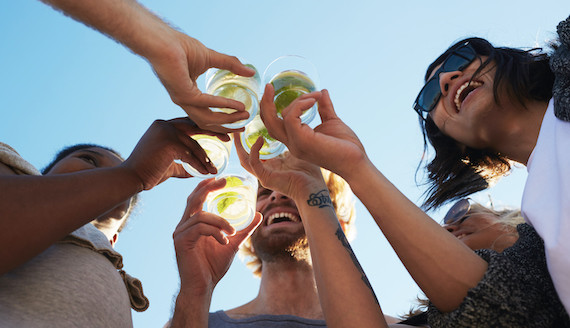INTERNATIONAL BRANDS
Bridging the gap with cocktails is a tactic that has been adopted by the few cachaça brands that have focused their attention internationally.
Yaguara topped the category table in the 2021 Drinks International Annual Brands Report, meaning it’s o en the go-to cachaça for the world’s best bars. Keen to establish cocktail credentials from the outset, when the brand launched in Brazil in 2013, New York bar The Dead Rabbit mixed the drinks at the Rio launch and Experimental Cocktail Club did so in São Paolo. In 2016, the brand went international and now two-thirds of sales are accounted for by export.
“UK and Italy have been our strongest markets in Europe,” says Lowe. “Southeast Asia and France too, which we expect will overtake the UK and Italy by the end of next year.
“In the US, Florida and New York are especially strong. What unites all those places is the quality of bar. As a premium cachaça, it’s the more premium venues that appreciate our offering. We believe that you’ll always move perception from the top down. We were part of a big movement of cocktail making in Brazil and the Brazilian cocktail bar scene has really grown in the last six or seven years.”
Abelha is a brand produced in Brazil’s first organic distillery and is another premium cachaça brand built for export.
“The agreement with [master cachaçeiro] Marcos Vaccaro was that we work with every market outside of Brazil,” says Tom Stockley, co-founder of Abelha Organic cachaça.
“Abelha was created for the export market. Marcos has his local-only brand which he self-distributes in Bahia [in north east Brazil], but at some point, we would like to repatriate Abelha and work within the cocktail scene in São Paolo and Rio.
“We launched in London and started in cocktail bars. You can use artisanal cachaças in pretty much all the rum cocktails. We’ve seen great success in the London cocktail scene and pretty much every great cocktail city in Europe.”
Stockley adds: “In the cachaça category, there’s still a lot of aspects out there to educate, to raise awareness and interest about how you can use cachaça. People have heard of the Caipirinha and probably just associate cachaça with the Caipirinha, but even then, it’s how to make the best Caipirinha and what other cocktails to do. That all starts in the bars.”
Having successfully launched the brand outside of Brazil, Stockley believes the category is moving in the right direction.
“Ten years ago, there wasn’t really a cachaça presence in the UK market,” says Stockley. “You did see some of the mainstream brands but there wasn’t a small batch or artisanal side.”
IN TEQUILA’S FOOTSTEPS
One category that cachaça manufacturers might be looking at with envy is agave spirits, and the two do share similarities. Both have mixable white expressions as well as complex, dark wood-aged varieties. And it has been the rise of tequila’s role as a serious sipping drink that has helped revise the category from being a regretful decision made at the bar at one in the morning to a premium spirit of the highest calibre.




